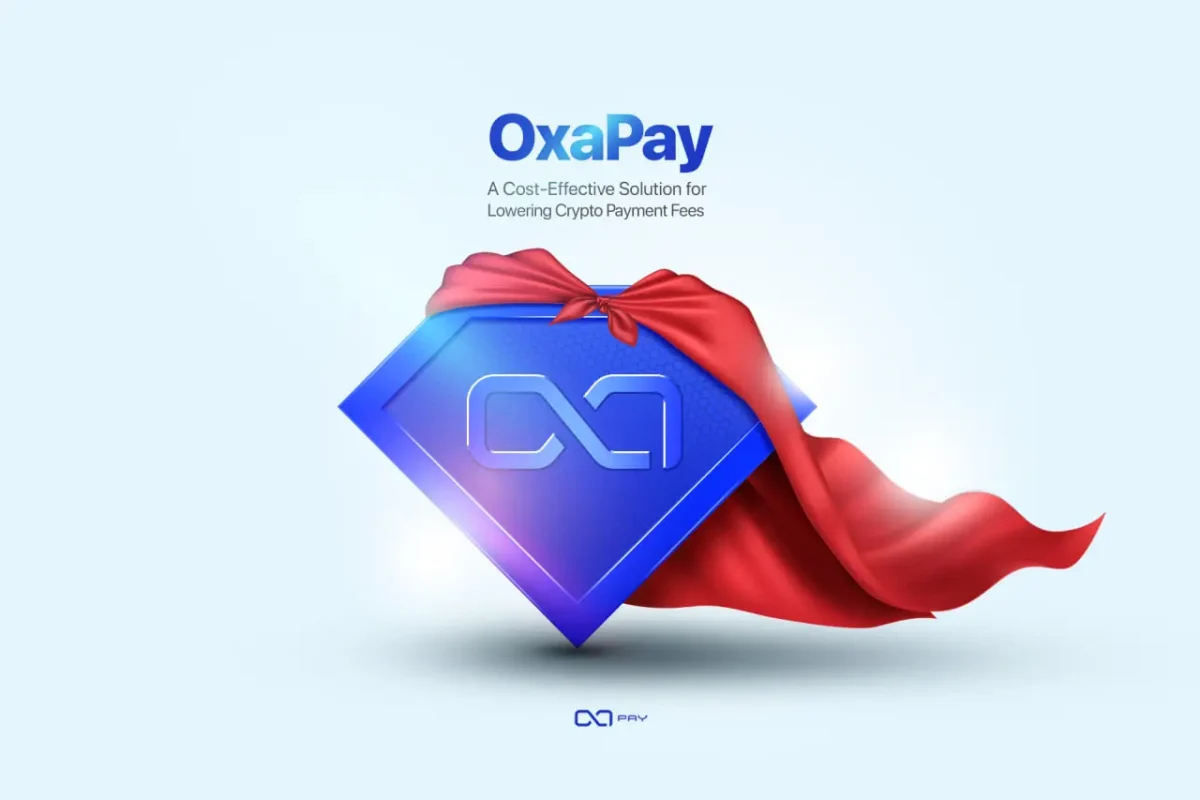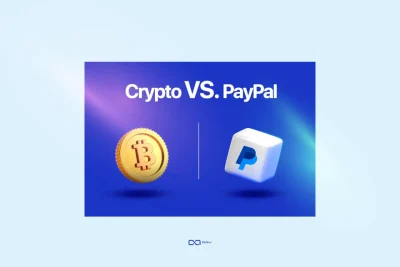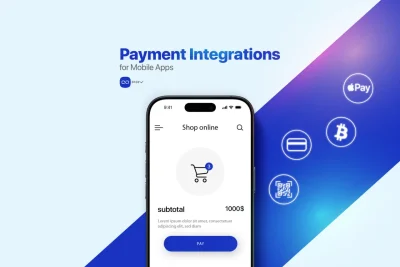Одно из самых больших преимуществ использования Криптовалюта для бизнес-платежей это возможность сэкономить на транзакционных издержках. Но не все криптошлюзы и блокчейн-сети являются экономически эффективными. Высокие комиссии в некоторых системах могут незаметно истощить прибыль и повлиять на долгосрочную устойчивость бизнеса. Как же предприятиям снизить комиссию за криптоплатежи, не жертвуя скоростью, безопасностью и удовлетворенностью клиентов?
В этом руководстве мы рассмотрим 6 практических стратегий, которые помогут вам сократить расходы, оптимизировать транзакции и сделать криптовалютные платежи реальным активом для вашего конечного результата.
Шаг 1: Выберите криптовалютный платежный шлюз с низкой комиссией
Криптовалютные платежные шлюзы сильно различаются по стоимости и структуре. Некоторые из них взимают высокую комиссию за каждую транзакцию, в то время как другие предлагают более доступные и прозрачные цены.
📌 Как выбрать лучший платежный шлюз?
✅ Сравните фиксированные и переменные комиссии разных шлюзов.
✅ Выберите шлюз с более низкой комиссией за транзакцию.
✅ Ищите дополнительные возможности, например, быстрые расчеты без дополнительных платежей.
Практический пример: OxaPay предлагает конкурентоспособные и доступные комиссии за транзакции, что делает его идеальным выбором для многих предприятий.
Исход: Выбор Прозрачный и недорогой платежный шлюз может сократить общие транзакционные издержки до 50%. Такой экономичный шлюз, как OxaPay, позволяет сэкономить деньги, обеспечивая быстрые расчеты и поддержку недорогих сетей, что в конечном итоге повышает рентабельность бизнеса.
Шаг 2: Используйте сети блокчейн с более низкими транзакционными издержками
Комиссионные за транзакции в блокчейне существенно различаются в зависимости от сети. Оптимизация выбора сети позволяет снизить стоимость криптовалютных транзакций без ущерба для надежности.
📌 Сравнение популярных блокчейн-сетей по размеру комиссии:
| Сеть | Комиссия за транзакцию | Скорость | Рекомендуемый вариант использования |
| ERC20 | Высокий | Середина | Высокодоходные платежи с надежной защитой |
| TRC20 | Низкий | Быстрый | Микроплатежи и частые транзакции |
| BEP20 | Низкий | Быстрый | Криптоплатежи общего назначения |
| Полигон | Очень низкий | Высокий | Подписки, повторные и автоматические микроплатежи |
Практический пример: Предприятие может настроить свой платежный шлюз таким образом, чтобы приоритет отдавался TRC20 или BEP20Таким образом, клиенты получают меньшую комиссию за транзакции.
Исход: Выбирая более дешевые сети, такие как TRC20, BEP20 и полигон может снизить стоимость перевода до 80%. Это побуждает клиентов отдавать предпочтение криптовалютным платежам, что приводит к увеличению объемов транзакций без увеличения расходов для бизнеса.
Шаг 3: сократите количество мелких транзакций, чтобы лучше управлять комиссиями
Каждый криптовалютная транзакция взимается сетевая комиссия. Если предприятие обрабатывает множество мелких транзакций, то совокупная плата может значительно увеличиться.
📌 Как снизить транзакционные издержки?
✅ Соедините несколько мелких платежей в одну большую транзакцию.
✅ Использование Статический адрес для сбора повторяющихся платежей без создания нескольких счетов-фактур.
✅ Анализируйте отчеты о транзакциях, чтобы эффективно планировать переводы средств.
Практический пример: Предприятие может объединить еженедельные выплаты в одну транзакцию вместо нескольких разрозненных платежей.
Исход: Поскольку каждая криптовалютная транзакция влечет за собой комиссию, пакетные платежи и использование Static Address позволяют сократить ненужные сборы. Эта стратегия может сократить транзакционные издержки на 30% в течение месяца, улучшив при этом управление финансами бизнеса.

Шаг 4: Переложите плату за транзакции на клиентов (если необходимо)
Некоторые криптовалютные платежные шлюзы позволяют предприятиям перекладывать плату за транзакции на плечи клиентов. Это означает, что покупатель берет на себя комиссию за перевод денег, гарантируя, что продавец не понесет никаких дополнительных расходов.
📌 Является ли хорошей идеей перекладывание транзакционных издержек на клиентов?
✅ Выгодно для предприятий с низкой рентабельностью.
✅ Криптовалютные клиенты, как правило, спокойно относятся к оплате транзакционных комиссий.
✅ Вы можете стимулировать клиентов, предлагая скидки или вознаграждения за лояльность, если они покрывают плату.
Практический пример: Магазин может дать объявление: "Криптоплатежи бесплатны, но если вы покрываете комиссию за перевод, то получаете 21 балл лояльности от компании "ВТБ4Т"!
Исход: Перекладывание комиссии за транзакции на клиентов может избавить бизнес от расходов на обработку данных. Сочетание этой стратегии с такими стимулами, как скидки или кешбэк за криптоплатежи, гарантирует, что у клиентов сохранится мотивация использовать криптовалюту, а у компаний - максимальная чистая прибыль.
Шаг 5: Оптимизируйте модели оплаты для снижения тарифов
Некоторые компании могут снизить операционные издержки, изменив модель оплаты.
📌 Лучшие стратегии для оптимизации моделей криптовалютных платежей:
✅ Принимайте стабильные монеты (например, USDT, USDC), чтобы избежать комиссии за конвертацию.
✅ Предлагайте гибридные платежи (криптовалюта + фиат) для большей гибкости.
✅ Используйте автоматические повторяющиеся платежи через Static Address.
Практический пример: Сервис, основанный на подписке, может собирать ежемесячные платежи с помощью стабильных монеток через недорогие сети, такие как TRC20.
Исход: Использование стейблкоинов, гибридных платежей и автоматических подписок снижает курсовые риски и избавляет от лишних затрат на конвертацию. Эти стратегии повышают долгосрочную рентабельность и привлекают больше криптовалютных транзакций без увеличения расходов на обработку.
Шаг 6: Отслеживайте и анализируйте отчеты о сборах
Чтобы со временем эффективно сократить расходы, компании должны отслеживать, сколько они тратят на криптовалютные транзакции. Регулярный анализ отчетов о платежах позволяет выявить скрытые неэффективные расходы.
📌 За чем следить:
✅ Общие расходы на криптовалютные транзакции в месяц
✅ Плата за монету/сеть (например, ERC20 против TRC20)
✅ Предпочтения покупателей в способах оплаты
✅ Соотношение недоплаченных и просроченных платежей
Практический пример: Предприятие обнаруживает, что 40% его транзакций все еще использует ERC20. Побудив пользователей перейти на TRC20 с помощью подсказок пользовательского интерфейса или экономии на комиссии, они сокращают общие ежемесячные расходы на 20%.
Исход: Постоянный мониторинг помогает выявить возможности экономии, адаптировать стратегии и доказать окупаемость криптовалютных платежей.

OxaPay: Эффективное снижение комиссии за криптовалютные платежи
OxaPay это новое поколение криптоплатежный шлюз Разработан с учётом экономической эффективности. Он поддерживает низкокомиссионные блокчейн-сети, такие как TRC20, BEP20 и Polygon, позволяя продавцам и их клиентам избегать высоких комиссий за газ, связанных с такими сетями, как Ethereum (ERC20).
Кроме того, OxaPay позволяет предприятиям перекладывать сетевые сборы на клиентов с помощью простого переключения и предоставляет гибкие инструменты настройки сборов. Это дает торговцам полный контроль над транзакционными издержками и позволяет им адаптировать платежный опыт в соответствии со своей бизнес-моделью.
Благодаря аналитике комиссий в режиме реального времени, множеству вариантов сетей и минимальной стоимости обработки OxaPay помогает компаниям значительно снизить комиссию за криптовалютные платежи и повысить общую рентабельность.
Заключение: Сократите комиссию за криптовалютные платежи и увеличьте прибыльность
Снижение комиссий за криптовалютные платежи — это не просто экономия средств, а создание более эффективной, масштабируемой и удобной платёжной системы. Снижая комиссии за криптовалютные платежи, выбирая более интеллектуальные шлюзы, используя недорогие блокчейн-сети и оптимизируя модели транзакций, вы увеличиваете прибыль, улучшаете качество обслуживания клиентов и создаёте структуру, способствующую устойчивому росту на конкурентном цифровом рынке.
Начните оптимизировать свои криптовалютные платежи уже сегодня. Неважно, начинаете ли вы или расширяетесь по всему миру, Криптовалютный шлюз OxaPay поможет вам снизить комиссию за криптовалютные платежи и расти без ущерба для скорости, безопасности и удобства.




